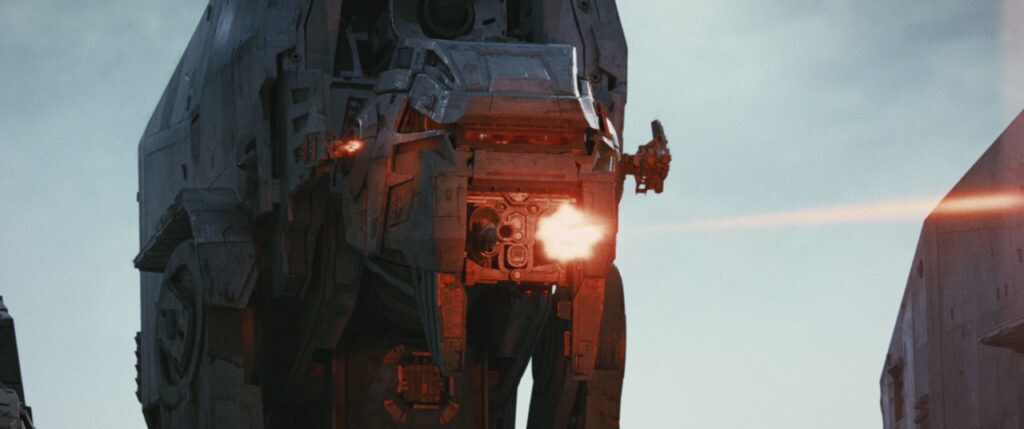In Star Wars: The Last Jedi, the First Order's military might goes next level.
As revealed in this week's episode of The Star Wars Show, The Last Jedi will see the debut of two deadly new vehicles: the Dreadnought warship and the AT-M6 walker.
The Dreadnought is classified as a Mandator IV-class warship, featuring two enormous orbital autocannons for large-scale bombardments and 24 point-defense anti-aircraft cannons on its dorsal surface. It's also big -- 7,669.72 meters in length, or 25,162.8 feet.
The AT-M6 (All Terrain MegaCaliber Six), named for the laser cannon on its back, dwarfs the Empire's AT-AT; its simian-like gait stabilizes the cannon.
But how did these two new technological terrors come to be? StarWars.com called Kevin Jenkins, Lucasfilm's design supervisor for The Last Jedi, for some insight -- including how this new walker solved that pesky tow-cable problem.
StarWars.com: Let’s start with the Dreadnought. Can you tell me about coming up with the design and how closely you were working with Rian Johnson to bring it to life?
Kevin Jenkins: All of my work was with Rian. Direct with Rian. The Dreadnought didn’t actually come to life until we got into post [production]. We had made some passes that were similar that Rian had approved that were on set, but it kind of turned into the final version that we are seeing now when we were in the post process, and we were going into full model-build stage. Basically, it evolved from story reasons because Rian needed a new battleship in the script called the Dreadnought. Essentially, it needed to be a ground-firing gun platform, and the other limitations that Rian put on me was he needed and required a flat surface with gun turrets on it. So basically, it’s an armored gunboat, an armored gun platform. It’s sort of a heavy artillery that’s much bigger than a standard Star Destroyer, about two-and-a-half times the size of a standard Star Destroyer. That was the original brief to me.
StarWars.com: As you were developing it, what were you looking at for inspiration? Were you looking at real-world craft or were you going back to the original trilogy and building off what came before? How did you approach it?
Kevin Jenkins: Combination of the original trilogy stuff, in the sense that I designed everything in Episode VIII as if it was to be a model. World War II and the Korean War and that era was a heavy influence in all the design, going into the ‘60s. But also using the mentality that Rian and I talked about a lot, which was an iteration-type idea. War makes you adaptive. So you start off with one vehicle, tank, gun, ship, and it evolves through combat into something else. The gun platform, of course being a larger Star Destroyer gun platform, we initially started with a giant triangle, which was the shape of a Star Destroyer. But then flattening off the top became a big design requirement. Quite late in the design phase, the under side of it was also sloped like a traditional Star Destroyer, because they are kind of a trapezoid shape if you look at them in a cross-section.
We had all sorts of design ideas and things, but when seeing an early cut with Rian, I just remember straight afterwards we talked to each other and went, “We need guns.” We tried radars because, obviously, you look at Return of the Jedi and there were radar dishes. There’s one on the Death Star. So it was also part of that retro, Flash Gordon-esque sci-fi thing, and we went down that path for a while, but then the cut just went, “Nah. Big guns. It just needs big guns.”















